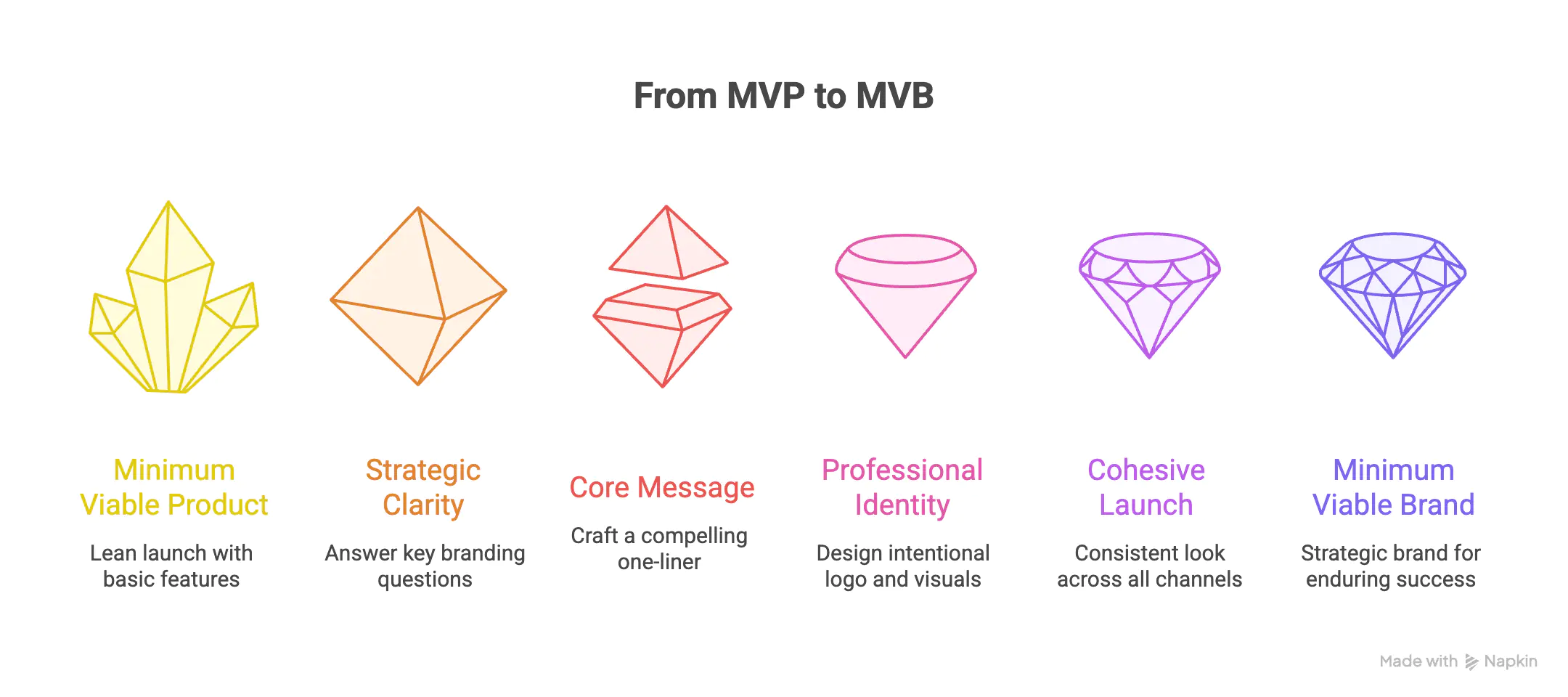The product is finally ready. The code is clean, the service is polished, the team is buzzing with anticipation. You’re on the brink of launching something new into the world—a new product, a new service, or an expansion into a totally new market. The excitement is palpable.
So is the fear.
The most common mistake we see ambitious founders make at this stage is assuming a great product is enough. They spend months, even years, perfecting the what but spend mere days, or even hours, thinking about how it will be perceived. They launch with a brilliant solution but a blurry identity, effectively shouting their message into a crowded, indifferent void.
At Studio FLACH, we guide leaders through these high-stakes moments. A launch isn't just about pushing a product live; it's about establishing a presence, building immediate trust, and capturing a foothold in the minds of your first customers. This requires a brand strategy as robust as your product strategy.
The Difference Between Launching a Product and Launching a Brand
Many companies launch products. Far fewer launch brands.
- A product launch says: "Here is a new thing you can buy." It's a transaction. It competes on features, price, and availability. It’s vulnerable.
- A brand launch says: "Here is a new way of seeing the world, and we've built a solution for people who see it our way." It’s a declaration. It competes on identity, trust, and emotional connection. It's defensible.
Without a brand, your innovative new product is just another commodity. Your competitor can copy your features, undercut your price, and steal your momentum. But they can't copy the trust and loyalty you build with a resonant brand.

Your product solves a customer's problem. Your brand makes them feel understood. In a new market, feeling understood is what turns a curious visitor into a loyal advocate.
The Pre-Launch Brand Audit: 5 Questions to Answer Before You Go Live
Before you finalize your launch date, you must be able to answer these questions with absolute clarity. Vague answers are a red flag that your strategy is incomplete.
1. Who is our "Day One" customer?
This isn't your total addressable market. It's the very specific niche of early adopters who will feel the pain you solve most acutely. Describe them. What do they believe? Where do they hang out online? What is the specific language they use to describe their problem? Your initial branding must speak directly to them, not to everyone.
2. What is our undeniable point of difference?
"We're better" or "we're more innovative" is not an answer. You need a specific, provable claim. Is it your process, your business model, your technology, your human-centric service? For example:
- Weak: "We're a better project management tool."
- Strong: "We are the only project management tool designed specifically for non-technical teams, using a drag-and-drop interface that requires zero training."
3. What emotion do we want to own?
When someone interacts with your new brand, how should they feel? Relieved? Empowered? Secure? Inspired? This core emotion will inform everything from your color palette and typography to your messaging and tone of voice.
4. What is our story?
People don't connect with features; they connect with stories. Why does this product exist? What frustration sparked its creation? What future are you trying to build? The story of your origin gives your brand a human element that people can rally behind.
5. How do we signal trust when we have no track record?
For a new entrant, trust is the most valuable currency. Since you have no customers or case studies yet, you must build trust through other signals:
- Professionalism: A polished, high-end visual identity and website.
- Transparency: Clear pricing, an accessible team, and honest communication.
- Authority: Creating expert content (blog posts, white papers) before you launch.
- Borrowed Trust: Endorsements from respected figures in your industry or early beta testers.

Minimum Viable Product is Not Enough. You Need a Minimum Viable Brand.
The concept of a Minimum Viable Product (MVP) has taught founders to launch lean and iterate. This is smart. But too often, this is misinterpreted as launching with a "Minimum Viable Brand"—a cheap logo, a generic website template, and placeholder messaging.
This is a critical error. Your brand is not a feature you can add later. It is the context for your product. It frames the entire experience. A weak brand at launch communicates that your product is temporary, unproven, and not to be taken seriously.
A Minimum Viable Brand (MVB) isn't about having a massive brand book and a Super Bowl ad. It's about having:
- Strategic Clarity: A clear answer to the five questions above.
- A Core Message: A simple, compelling one-liner that explains what you do and for whom.
- A Professional Identity: A logo, color scheme, and typography that look intentional and credible.
- A Cohesive Launch Experience: A consistent look and feel across your website, social channels, and any launch communications.

A new frontier is full of risk and opportunity. While your product gives you the right to compete, your brand gives you the power to win. By building a strategic brand from day one, you aren't just launching a product; you're staking your claim and building a foundation for enduring success.
Planning a launch? Let's ensure your brand is as ready as your product.

